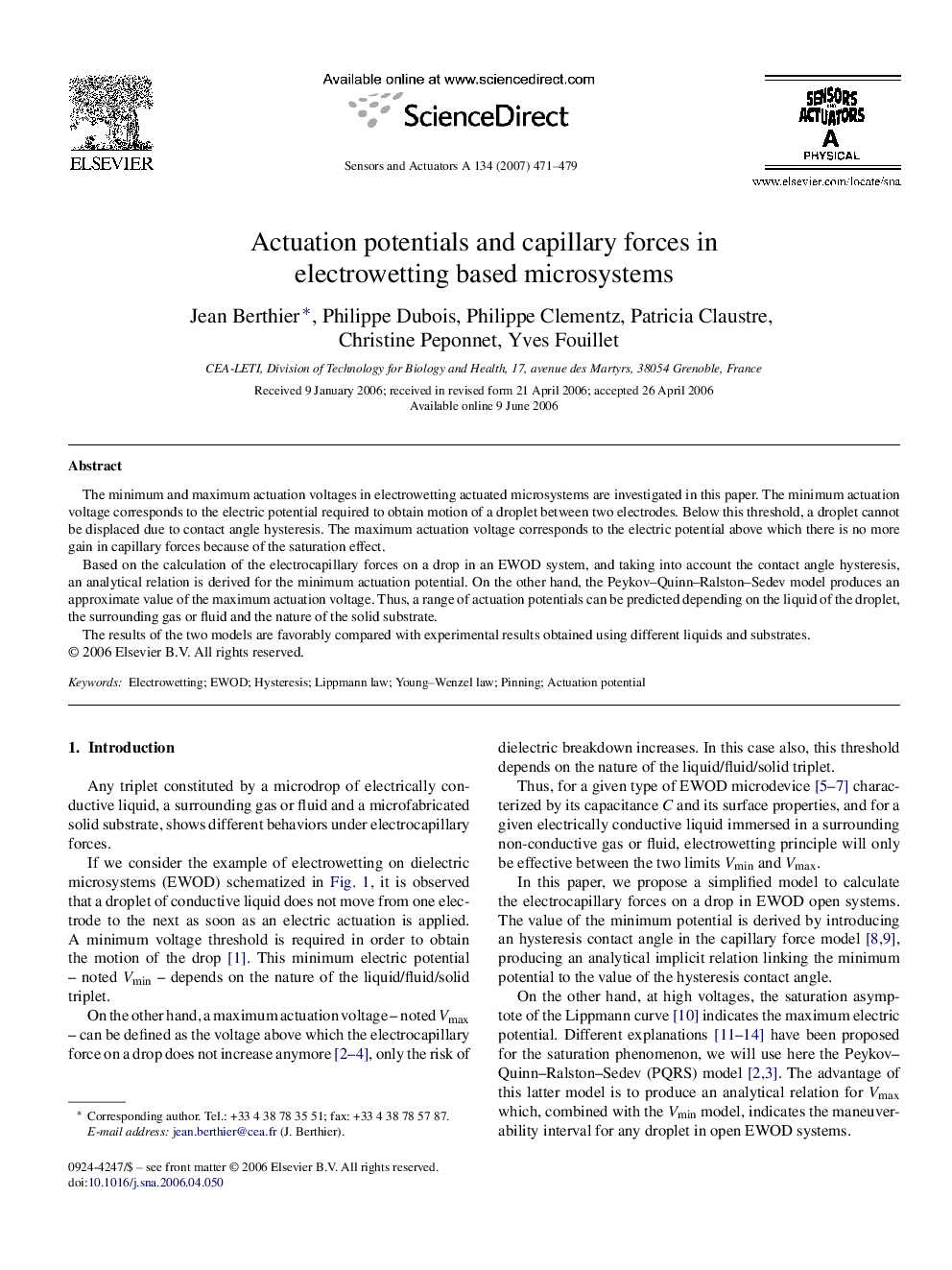| Article ID | Journal | Published Year | Pages | File Type |
|---|---|---|---|---|
| 738443 | Sensors and Actuators A: Physical | 2007 | 9 Pages |
The minimum and maximum actuation voltages in electrowetting actuated microsystems are investigated in this paper. The minimum actuation voltage corresponds to the electric potential required to obtain motion of a droplet between two electrodes. Below this threshold, a droplet cannot be displaced due to contact angle hysteresis. The maximum actuation voltage corresponds to the electric potential above which there is no more gain in capillary forces because of the saturation effect.Based on the calculation of the electrocapillary forces on a drop in an EWOD system, and taking into account the contact angle hysteresis, an analytical relation is derived for the minimum actuation potential. On the other hand, the Peykov–Quinn–Ralston–Sedev model produces an approximate value of the maximum actuation voltage. Thus, a range of actuation potentials can be predicted depending on the liquid of the droplet, the surrounding gas or fluid and the nature of the solid substrate.The results of the two models are favorably compared with experimental results obtained using different liquids and substrates.
